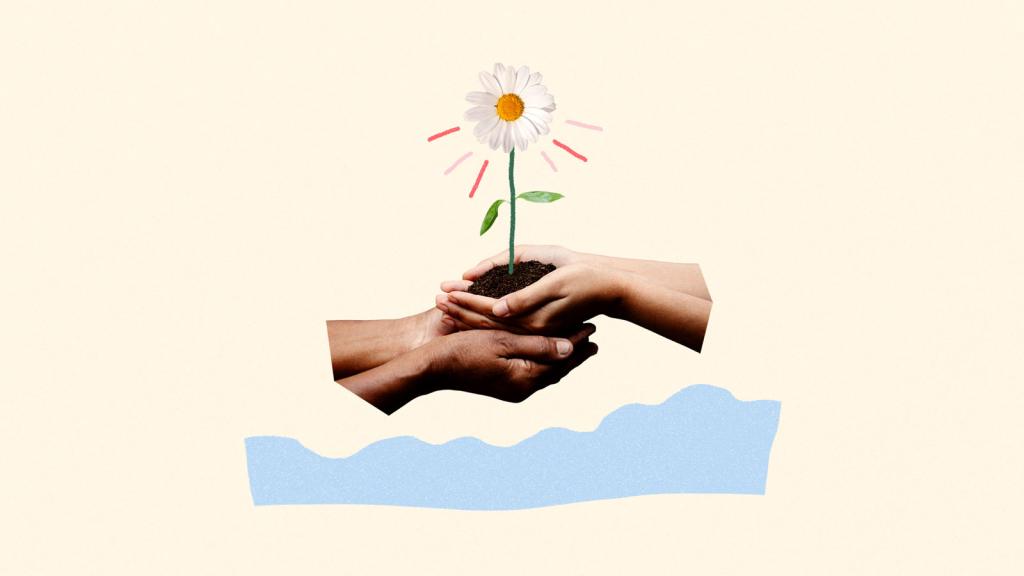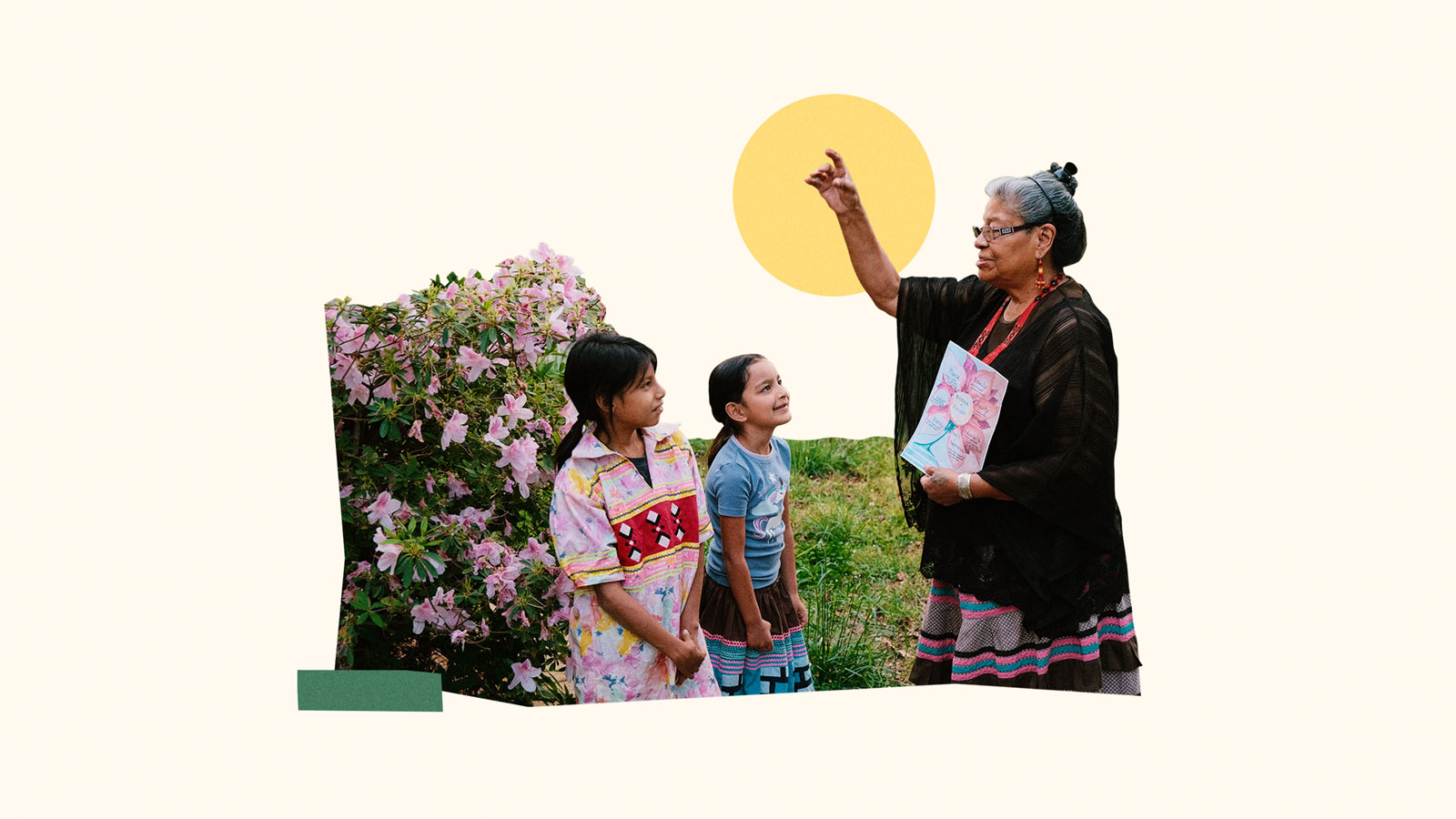This story is part of Fix’s Mentorship Issue exploring the unique ways climate leaders found their calling, and how new approaches to mentorship are upending old power structures. Check out the full issue here.
On the night of September 2, activists with Fandom Forward, A Tribe Called Geek, and Honor the Earth held a rally that mobilized 100 young adults — including me — to take action against the Line 3 Pipeline. During the two-hour event, we took 360 political actions that ranged from emailing and calling President Biden and Minnesota Governor Tim Walz to arranging our own Stop Line 3 action parties.
We came together virtually. We didn’t see each other during the event given that we were on Twitter, but we got to know one another through the hashtag #FansStopLine3, bonded by our desire to change the world — and our love of Avatar: The Last Airbender.
That’s right! The Nickelodeon cartoon.
I’m a proud Blerd (Black nerd, for the uninitiated) whose love of the show, known by the shorthand ATLA, and its spin-off series The Legend of Korra, goes back to elementary school. The first episode aired on February 21, 2005, the day after my 10th birthday. I was in fifth grade and already a budding anime fan. It was Monday, a school day, and I was convinced that the show’s debut was a birthday present. I remember friends offering belated birthday wishes and my asking if they were excited to watch the first episode.
The show is unlike any Nickelodeon cartoon I’ve experienced. Being the big sister in my family meant I had to keep an eye on my siblings while they watched Blue’s Clues and Dora the Explorer. Don’t get me wrong, I loved turn-of-the-century Nicktoons like SpongeBob SquarePants, Rugrats, and Aaahh!!! Real Monsters. But the emotional and narrative depth that ATLA provided was unique to Nick in the 2000s.
It tells the story of a 12-year-old airbender — one who can wield the elements earth, water, air, and fire as weapons or healing tools — named Aang. He journeys with his friends Katara, Sokka, Toph, and Prince Zuko to become the master of those elements and stop the United Sta— I mean the Fire Nation from fanning the flames of a colonialist agenda that is devouring the world.
The nonprofit Fandom Forward embraces what it calls “the power of pop culture to make activism more accessible for everyone” — an idea dubbed “critical nerd theory” during the rally. Simply put, it means spurring young people to action by using popular stories like Avatar: The Last Airbender and Steven Universe to draw parallels to the real world and show how anyone can make a difference. “We believe in the power of story to turn fans into heroes,” says Katie Bowers, the organization’s managing director.
Fandom Forward has been around for 15 years, making it as old as ATLA. The nonprofit gained a huge following of Harry Potter fans during its first campaign, during which it collaborated with the rock band Harry and the Potters to solicit donations for Amnesty International. That led to subsequent drives to promote literacy equity, abolish ICE, and more.
As the organization grew, it expanded to include fans of everything from Pokémon to Doctor Who and started working with other organizations, including Honor the Earth, whose water protectors enlisted Fandom Forward to help draw more people to the fight against Line 3. “The idea came from all of us at the organizational level being fans of the series,” Bowers says. Sixty volunteers from Honor the Earth helped develop the campaign.
Before the September rally, Fandom Forward emailed everyone who’d signed up for the event with instructions to press play on “The Painted Lady” at precisely 8 p.m. Eastern on September 2. In this seminal episode, the third from season three, Team Avatar visits the river town of Jang Hui, where the Fire Nation is dumping what appears to be oil from a military factory into the water. The pollution is altering the ecosystem and killing local food sources, starving everyone in the village. The parallels to what’s happening in Minnesota are palpable. As we watched, people used the Twitter hashtag #FansStopLine3 to ask questions, quote from the episode, and make observations about the proximal reality of 2021 portrayed as dystopian pollution in a cartoon that aired its last episode 13 years ago.
When the credits rolled, everyone went to YouTube Live to hear Honor the Earth organizers, water protectors, and Indigenerds discuss how closely our reality aligns with the threats the heroes of ATLA faced — waters tarnished with oil and trash, food sovereignty threatened, and the climate forever altered.
“You get to share your thoughts with people who care about the cause and the fanbase at the same time,” says Lee Francis IV, who owns Red Planet Books and Comics (the world’s only Indigenous-owned comic book shop), and founded Indigenous Comic Con.
Avatar: The Last Airbender debuted in 2005. From the start, it transcended traditional American cartoons by paying homage to Native Alaskan and Southeast Asian cultures, and addressing empathy and Indigenous knowledge systems. This kind of animated storytelling was a first for a major television outlet. The show became a teacher, even a mentor, to a generation that now comprises the most active segment of the climate movement. During its three seasons, which spanned 61 episodes, show creators Michael DiMartino and Bryan Konietzko told a nuanced and engrossing story that addressed genocide, colonialism, and feminism.
That makes Avatar, particularly “The Painted Lady,” perfect for enlisting young activists in the fight against Line 3. “It is intensely hopeful,” Bowers says of the episode. It is that sense of optimism that drew many to ATLA in the first place, and to Fandom Forward’s campaign against the pipeline.
“Not only are you taking action in community, but you are also forced to make parallels between your favorite thing and real life,” says Skyeler Kopper, a Fandom Forward intern who came to activism following the murder of George Floyd. “You realize, “Wow, this is happening right in front of me.’”
It is perhaps one of the best examples of how pop culture touchstones, such as Code Geass, Star Trek, and Spiderman: Into the Spider-Verse, teach their viewers by tackling deep societal themes they might not learn about elsewhere, and manifesting how vexing problems might be solved.
The show found a new audience last year when Netflix began streaming the series, which became a surprise hit. Janet Varney, who provided the voice of Korra in The Legend of Korra and created the podcast Braving the Elements, is not surprised that ATLA continues to draw in young adults. “In my opinion as a huge fan of the series myself, it has every reason to resonate,” she says.
Francis, in addition to owning a comic book store that publishes the pop culture platform A Tribe Called Geek, is a writer and teacher of Indigenous storytelling. He became a fan of the show when he started watching it with his son. Francis says Avatar’s approach to storytelling makes it a particularly effective way of mentoring people. “ATLA is a value story,” he says. “It teaches us how to be better people, to each other and as stewards of the land, just like our Native stories.” He finds ATLA inspiring because it shows how individual and collective action can foster change. “We see paths forward for these characters,” he says. “The small decisions they act upon make a huge difference.”
Francis finds it empowering to see protagonists who resemble him and his son, who are Laguna Pueblo, changing the world for the better. “There is a wall of tragedy that has been built around us,” he says, “and that’s all most people see. But in Avatar, these folks go through tragedy, rise up from it, and are heroes for the little things they do. That’s powerful!”
Ernest “Joey” Oppegaard-Peltier is an Anishinaabe water protector and nerd at heart who is running for the U.S. House of Representatives. His home is decked out with Fullmetal Alchemist and Cowboy Bebop posters, and he eagerly showed me his World of Warcraft Lady Sylvanas Blizzard Funko Pop figurine. He is an avowed Trekkie and is inspired by any story that involves heroes rising sunlike out of the labor class. “All that cool nerdy shit shows us possibilities of what we can do in a failing system,” he says. “And they show us apocalyptic alternatives of what can happen if we do nothing.”
I grew up in a non-nuclear and financially insecure household; Avatar taught me how to build a family of my friends and allies. It resonated with my belief, which I learned from my Indigenous ancestors, that our shared connection to the earth provides its own familial bond. In the 15 years since I first watched ATLA, I’ve learned that the small things I can do to help the environment matter the most. So I spend a lot of time learning how to rekindle my connection with the land, I forage for fruit and used clothes, reuse glass spaghetti sauce jars, and recycle all plastics. I am diligent about helping Indigenous activists and culture keepers share their voices.
As I write this, two months after the rally, Enbridge has laid Line 3, which cuts through Anishinaabe treaty land, crosses 200 bodies of water, threatensManoomin (wild rice), and is pumping tar sands through the endangered wetlands of northern Minnesota. Fandom Forward continues racking up actions in opposition to this “black snake.” At last count, the activists enlisted during the ATLA rally have completed 424 actions.
Everyone who has sent an email, made a phone call, or organized a rally in the weeks since has done their part to stop a formidable foe — just as Team Avatar taught them to. “We have a prophecy called ‘The Seventh Generation and the Black Snake,’” says Oppegaard-Peltier. “The Seventh are our helpers, elders, youth coming together with all nations of the world and on Turtle Island, overcoming colonization.”
Although I have yet to reach the front lines, to be in the water, and share the voices of those protecting what is sacred, the watch-party rally taught me how any action helps by reconnecting us to a cartoon series that I, and so many others, love.
Explore more from Fix’s Mentorship Issue:
- How to have a meaningful conversation with your mentor
- Resilience, community, and other lessons i’ve learned from my plants
- How Gen Z is mentoring their elders on climate action




